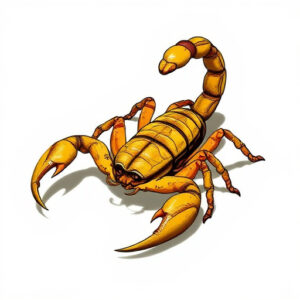Scorpion Control Tucson: Safe Removal & Prevention Techniques
Understanding scorpion behavior – their aversion to light, preference for dry and warm environ…….

Understanding scorpion behavior – their aversion to light, preference for dry and warm environments, and slow movement – is crucial for effective scorpion control in Tucson. This knowledge guides targeted prevention strategies like sealing entry points and informed use of non-lethal methods like sticky traps or gel baits by professionals. For optimal results, Tucson residents should seek expert services tailored to the local ecosystem's unique scorpion species, safety precautions, and strategic removal techniques, including container trapping, while maintaining a scorpion-free environment through proactive measures.
Tucson residents often deal with scorpion infestations, but effective scorpion control is achievable. Understanding these creatures’ behavior and identifying common species specific to Tucson is crucial for safe removal. This article guides you through every step, from recognizing scorpions in your home to preventing future visits. Learn about protective gear, safe location techniques, and physical removal methods, all tailored to the unique challenges of scorpion control in Tucson.
- Understanding Scorpion Behavior: Key to Effective Scorpion Control Tucson
- Identifying Common Scorpion Species in Tucson
- Precautions and Protective Gear for Scorpion Removal
- Safely Locating Scorpions: Techniques and Tools
- Physical Removal Methods: Step-by-Step Guide
- Preventing Future Infestations: Tips for Scorpion Control Tucson
Understanding Scorpion Behavior: Key to Effective Scorpion Control Tucson

Understanding the behavior of scorpions is a crucial step in implementing effective scorpion control methods in Tucson. These arachnids are primarily nocturnal, seeking shelter during the day and becoming active as the sun sets. They are attracted to warm, dry environments, often hiding in cracks, crevices, and dark spaces found in homes, sheds, or outdoor areas. Knowing these habits allows for targeted prevention strategies. For instance, sealing entry points like gaps in walls, attics, and foundations can deter scorpions from entering.
When a scorpion infestation occurs, it’s essential to recognize their behavior patterns during removal efforts. Scorpions are territorial but generally avoid confrontation. They tend to move slowly and strike only when threatened or provoked. Professional scorpion control services in Tucson often employ non-lethal methods, such as using sticky traps or specialized gel baits, which exploit these behaviors. Understanding and utilizing these natural tendencies effectively contributes to a successful scorpion control strategy.
Identifying Common Scorpion Species in Tucson

Tucson, known for its arid climate and diverse ecosystems, is home to several scorpion species. When it comes to scorpion control Tucson residents often need expert intervention. Identifying these scorpions is the first step towards effective removal. One of the most common species in the region is the desert scorpion (Crotus cerasinus), easily recognized by its dark coloration and a distinctive stinger at the end of its tail. This species prefers dry, rocky habitats and is often found under debris or in crevices.
Another prevalent scorpion in Tucson is the giant desert hairy scorpion (Androctonus biunguis). As the name suggests, this scorpion has a thick coat of hair and can grow up to 10 cm in length. Unlike the desert scorpion, it tends to prefer hotter environments and is often found in vacant buildings or outdoor spaces with inadequate lighting. Understanding these species’ behaviors and habitats is crucial for implementing effective scorpion control methods tailored to Tucson’s unique ecosystem.
Precautions and Protective Gear for Scorpion Removal

When it comes to scorpion removal, safety should always be the top priority. Scorpions are arachnids known for their stings, which can cause pain and, in rare cases, more severe reactions. To ensure your well-being during scorpion control Tucson, wear protective gear such as thick gloves, long sleeves, pants, and closed-toe shoes. This barrier protects against both stings and potential scratches from the scorpions’ pincers.
Additionally, consider using a face mask to protect against any tiny hairs or particles that scorpions may shed, which can cause respiratory irritation. Always inspect your gear for any tears or damage before attempting removal, and remember that professional scorpion control services are available in Tucson if the infestation is severe or persistent. These experts have the necessary tools and training to handle scorpions safely and effectively.
Safely Locating Scorpions: Techniques and Tools

Locating scorpions safely is a crucial first step in effective scorpion control Tucson. Professionals often use a combination of techniques and tools to identify these creatures, ensuring both their safety and the accuracy of the removal process. One common method involves visual inspections during the cooler parts of the day when scorpions are more active but less visible. Walking around the property with a flashlight, especially along walls, foundations, and in dark corners, can help spot scorpions scurrying about.
Additionally, sticky traps placed strategically in areas known for scorpion activity can capture them without causing harm. These traps are particularly useful for monitoring the presence and movement of scorpions over time. For more targeted approaches, trained professionals may employ specialized equipment like long-handled brushes or vacuum cleaners with detachable bags to gently sweep and capture scorpions without damaging them. This meticulous process ensures that any scorpions present on the property are safely removed, contributing to a scorpion-free environment.
Physical Removal Methods: Step-by-Step Guide

Physical removal methods, while seemingly straightforward, require careful consideration and a strategic approach to ensure safety for both you and the scorpion. The goal is to capture the scorpion without causing harm or stressing the creature unduly. One effective technique involves using a clear, shallow container like a glass jar or a plastic container with a secure lid.
First, locate the scorpion, ensuring it’s accessible without any hidden spots. Then, gently approach and place the container over it, creating a barrier between you and the scorpion. Quickly but calmly, flip the container upside down, trapping the scorpion inside. Securely close the lid to prevent escape and carefully transport the container to an outdoor location far from your property, releasing the scorpion in a safe, remote area away from humans and pets. Remember, this method demands precision and swiftness for successful scorpion control Tucson residents often require.
Preventing Future Infestations: Tips for Scorpion Control Tucson

To prevent future infestations and maintain a scorpion-free environment in Tucson, several proactive measures can be taken. Regularly inspecting your property for any signs of scorpions, such as droppings or tracks, is crucial. Seal off potential entry points by filling cracks and gaps around windows, doors, and utility pipes with caulk or weatherstripping. Reducing moisture levels in your home and yard can also deter scorpions, so fixing leaky faucets and ensuring proper drainage is essential.
Maintaining a clean and clutter-free environment, especially in areas prone to scorpion activity like garages and storage rooms, can significantly reduce their appeal as hiding spots. Additionally, using natural repellents like diatomaceous earth or citrus oils around entry points can help keep scorpions at bay. For more persistent issues, consider hiring professional scorpion control services in Tucson that employ safe, eco-friendly methods tailored to your specific needs.
When it comes to scorpion control Tucson, understanding these creatures’ behavior and taking proactive measures is key. By identifying common species, utilizing safe removal techniques, and implementing prevention strategies, you can effectively manage and reduce scorpion infestations. Remember, knowledge is power when it comes to keeping your home and property free from scorpions. With the right approach, you can ensure a safer and more comfortable living environment in Tucson.







